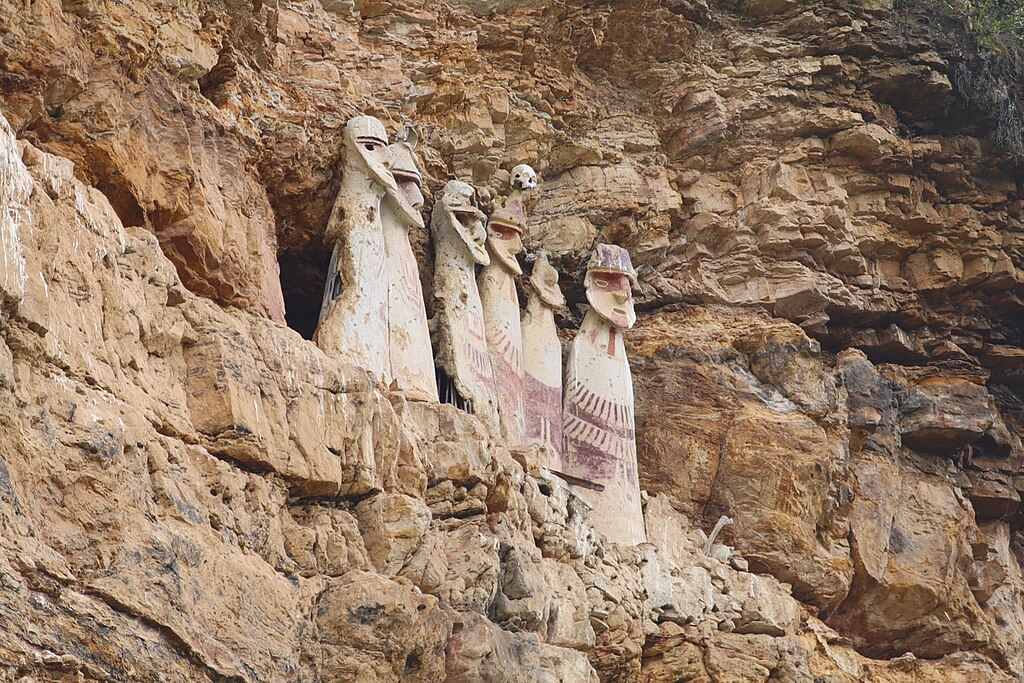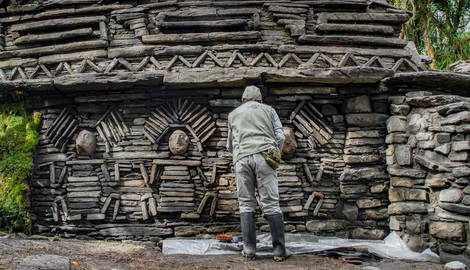
Researchers uncovered over 100 previously unknown buildings at Gran Pajatén, a hilltop archaeological site in northern Peru. The findings promise to shed new light on the mysterious Chachapoya civilization, an ancient Andean culture that was lost to Incan and Spanish conquest.
Who Were the Chachapoya People?

The Chachapoya people are among the lesser-known pre-Hispanic civilizations of South America. Known as “warriors of the clouds” or “people of the cloud forest,” the Chachapoya lived in the cloud forests of northern Peru between the Andes and the Amazon. The Inca Empire conquered the Chachapoya civilization in the second half of the 15th century, devastating their population and way of life shortly before the Spanish conquest of the 16th century.
The name Chachapoya was given to this ancient Andean culture by the Inca conquerors. Alongside many other details, it is unknown what name the Chachapoya may have used to refer to themselves. The latest research at the Gran Pajatén archaeological complex, which revealed over 100 previously undocumented structures, is revealing rare insights into their ancient culture.
New Technology Reveals “Hidden Structures with Remarkable Accuracy”

The investigation at Gran Pajatén was led by the World Monuments Fund of Peru between 2022 and 2024. The research team combined traditional archaeology with remote sensing technology—including aerial and terrestrial LiDAR scanning—to map the dense terrain of the area non-invasively. These technologies enabled investigators to more accurately identify and document over 100 previously hidden Chachapoya structures. Among these are distinctive circular structures, cliffside tombs, and complex agricultural systems.
“LiDAR allows us to record the territory in millimeter detail, revealing hidden structures with remarkable accuracy and to gain a deeper understanding of the spatial organization and settlement complexity of Chachapoya interventions within the broader landscape,” Juan Pablo de la Puente Brunke, executive director of World Monuments Fund in Peru, told Artnet. “Our team was able to gather extraordinary visual and scientific documentation that brings Gran Pajatén to life. These tools will allow us to share its stories widely through thoughtful, immersive digital storytelling.”
The History of Peru’s Gran Pajatén

About 300 miles north of Lima, Gran Pajatén is a hilltop archaeological complex overlooking the valley of the Montecristi River. It is known for its ancient circular stone buildings that bear mosaics and bas-relief friezes of human figures. “The site likely held ceremonial and symbolic significance, while also functioning as a strategic cultural and territorial center,” de la Puente Brunke explained. “Its architectural complexity and visual prominence suggest it was central to how the Chachapoya organized their territory, beliefs, and social life.”
Gran Pajatén, most of which has long been hidden beneath vegetation, was rediscovered in the 1960s. Until now, Gran Pajatén was known to contain 26 ancient structures. These were once considered among the most extensive and important remains of the Chachapoya civilization. Researchers are utilizing their latest findings to create a more complete map of the site.










